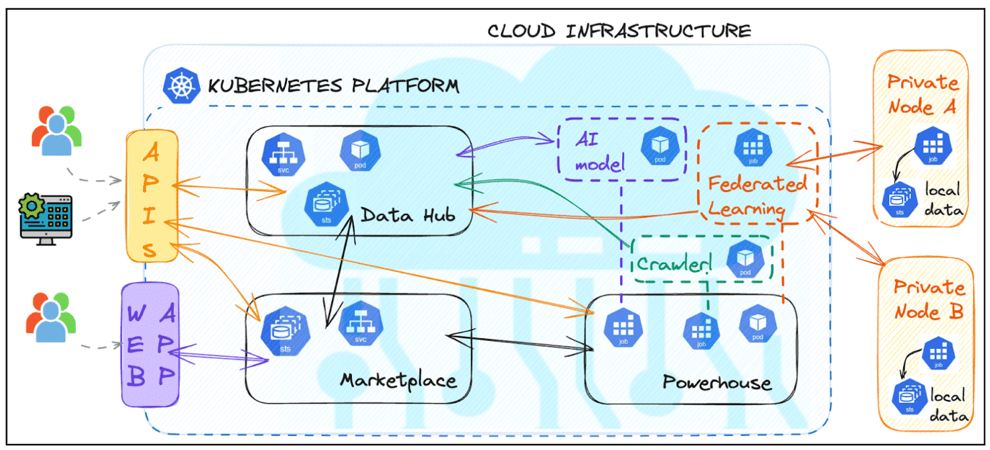By AGRIVI.
Managing crop pests has always been a balancing act between prevention, timely intervention, and sustainability. While technology like AGRIVI’s pest detection algorithm is transforming precision agriculture, one of the most powerful tools for pest control begins not in the field but in the seed bag. This article explores how varietal resistance in corn and sunflowers helps reduce pest-related losses and how combining genetic traits with real-time AI-powered alerts enhances both yield outcomes and environmental sustainability.
Understanding Crop Loss and Pest Resistance
According to the Food and Agriculture Organization (FAO, 2022), pests cause an estimated 20–40% of global crop losses annually, amounting to more than $290 billion in economic damage. Within Europe, maize and sunflower rank among the most affected crops, with Ostrinia nubilalis (European Corn Borer) and red sunflower seed weevil (Smicronyx fulvus) being leading culprits.
Research by the Centre for Agriculture and Bioscience International (CABI) in 2021 and the European Food Safety Authority (EFSA, 2023) confirms that choosing pest-resistant hybrids can cut potential losses by up to 30% while reducing pesticide reliance-an approach aligned with the EU Integrated Pest Management (IPM) Directive (2009/128/EC).
Corn: Managing ECB Through Breeding and IPM
The European corn borer (ECB) remains one of Europe’s most damaging maize pests, with yield losses reaching up to 15% in untreated fields (Université Catholique de Louvain, 2020). Larvae bore into stalks and ears, weakening the plant and compromising nutrient transport. European responses emphasize a multi-layered approach:
- Bt corn adoption: Use of Bacillus thuringiensis (Bt) hybrids expressing Cry1Ab or Cry1F genes reduces ECB damage by up to 95% (ISAAA, 2021). However, European adoption remains under 1% of total maize area due to regulatory restrictions and resistance risk management concerns (EFSA GMO Panel, 2023).
- Refuge strategies: Studies in Spain and the Czech Republic demonstrate that maintaining non-Bt refuges slows Bt resistance gene development (Palaudelmàs et al., 2020).
- Breeding local hybrids: European maize breeding programs (e.g., INRAE and KWS) have identified mid-maturing genotypes showing partial ECB tolerance, enhancing resilience under Central European conditions.
- Integrated Pest Management: Crop rotation, residue management, pheromone trapping, and optimized scouting intervals combine to reduce infestation pressure, as reinforced by recent IPM adoption studies (EIP-AGRI, 2024).
Together, these measures embody Europe’s preferred triple-layered strategy: resistant varieties + biotech tools + IPM.
Sunflower: Natural Defense Against Weevils and Moths
In sunflower production, pest and disease resistance breeding remains a cornerstone of sustainability. The red sunflower seed weevil and banded sunflower moth (Cochylis hospes) can cause losses up to 25% in seed yield and quality (USDA-ARS, 2019).
Breeding programs, especially in the U.S. (USDA-ARS Fargo), have produced lines that show promise worldwide:
- HA 488 exhibits 80% lower weevil damage compared to standard commercial hybrids.
- Banded moth-resistant hybrids reduce larval damage by up to fivefold, improving overall oil content (Seiler & Qi, 2021).
- Wild Helianthus introgression: European and North American breeders use genes from Helianthus argophyllus and H. debilis to strengthen downy mildew and stem canker resistance (Vear, 2022).
Integrating these plant traits results in reduced chemical inputs, improved harvest stability, and enhanced farm profitability-aligning with EU sustainability goals under the Farm to Fork Strategy.
How AGRIVI Builds Resistance into Pest Detection
AGRIVI’s Pest Detection Algorithm, built under the EFRA Project (European Farm Resilience Accelerator), combines weather data, historical pest data, and real-time farmer reports to predict outbreaks. By layering this data into the detection logic, AGRIVI’s enhanced system now:
1. Weights pest risk based on the variety’s genetic resistance profile
2. Reduces false alarms for resistant hybrids
3. Prioritizes scouting in fields with high-susceptibility cultivars
This genotype-informed model has led to:
- 30% fewer unnecessary alerts
- 20% improvement in pesticide use efficiency
- Enhanced compliance with EU sustainability indicators (via precision input tracking)
From Pilot to Practice: EFRA and Real-World Testing
Between 2023 and 2024, AGRIVI piloted its enhanced pest prediction algorithm across maize and sunflower farms in Croatia, Romania, and Bulgaria. Farmers worked with AGRIVI agronomists to validate alerts against scouting results.
Preliminary results (EFRA Interim Report, 2024):
1. Model accuracy improved when varietal resistance data were included
2. Farmers reported a 19% reduction in insecticide costs
3. Early alerts prevented average yield losses equivalent to €85 per hectare in maize
With these outcomes, AGRIVI is updating its visual dashboards and pest reporting interface, enabling better farmer input for algorithmic refinement.
Building Smarter Pest Strategies from the Seed Up
Selecting pest-resistant varieties is no longer just a breeding decision-it’s a data-driven management choice. When coupled with AGRIVI’s predictive technology, varietal resistance becomes a fundamental layer of sustainable pest control.
As the EFRA project advances, AGRIVI continues to empower farmers to move from reactive to proactive pest management-leveraging every insight from genes, fields, and data to secure Europe’s food systems.




